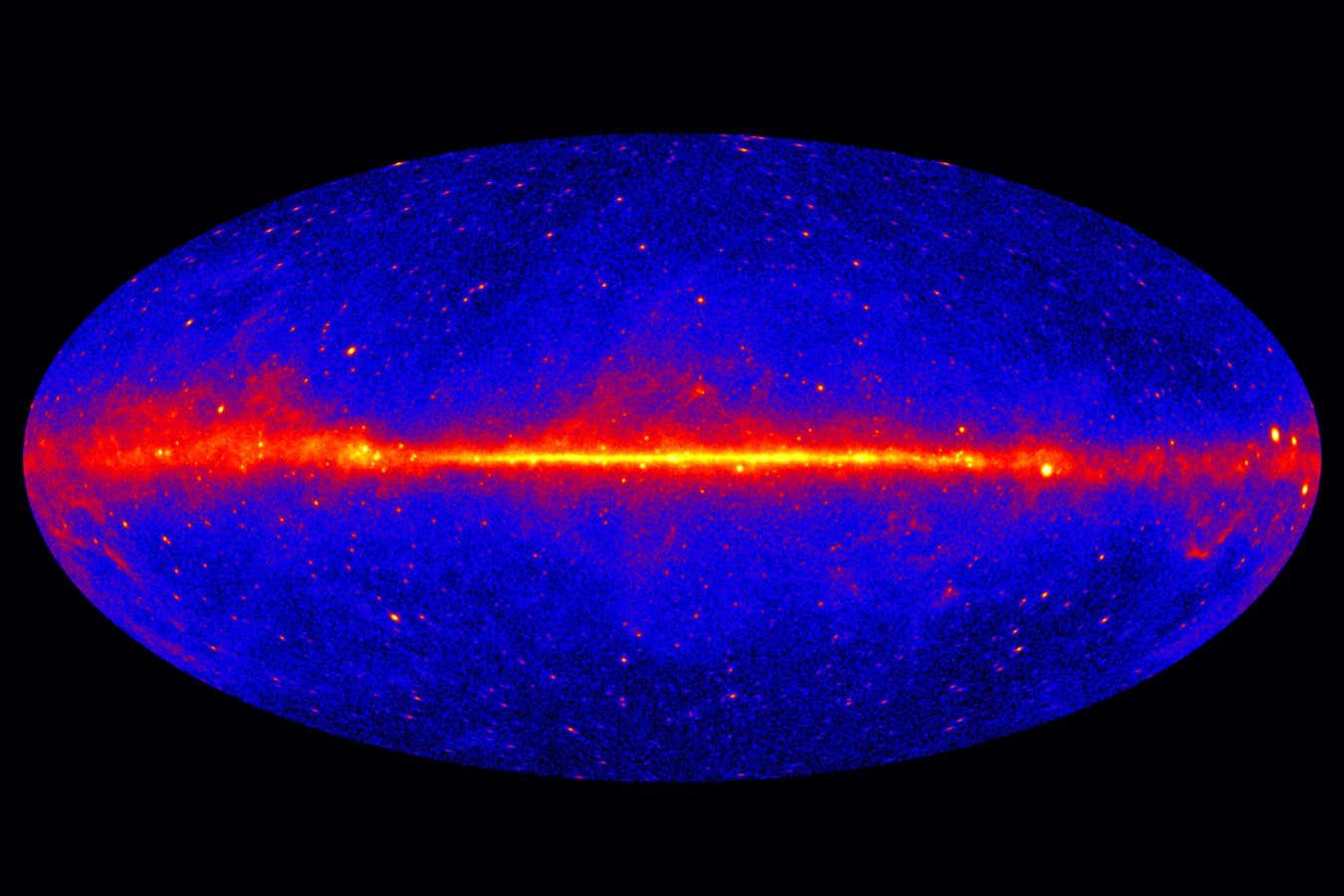Key Takeaways
- High concentrations of gamma rays at the Milky Way’s center may be linked to dark matter annihilation.
- Previous theories include unknown pulsars or weakly interacting massive particles (WIMPs) as potential causes.
- New simulations suggest a non-spherical dark matter distribution, reviving the dark matter interpretation for the gamma-ray excess.
Unexpected Gamma Rays in the Milky Way’s Center
In 2009, the Fermi Gamma-ray Space Telescope detected an unusual concentration of gamma rays from the Milky Way’s center, known as the galactic centre gamma-ray excess (GCE). This anomaly has led scientists to explore two primary hypotheses for its origin.
One theory proposes these gamma rays could stem from a hidden population of pulsars—rapidly rotating neutron stars emitting intense radiation. The second and historically favored explanation involves weakly interacting massive particles (WIMPs), which are prime candidates for dark matter. WIMPs, if they collide, could annihilate and generate bursts of gamma rays.
However, the dark matter hypothesis has faced challenges in recent years due to the absence of direct evidence for WIMPs, despite extensive searches. Jeff Grube from King’s College London notes that the lack of concrete findings necessitates stronger proof for this interpretation. Additionally, the expectation of a spherical distribution of dark matter at the galaxy’s center conflicts with the observed flattened shape of the GCE.
Recent simulations by Joseph Silk and his team at Johns Hopkins University reconsider this interpretation. They incorporated a detailed history of the Milky Way, including its mergers with smaller galaxies, which brought their dark matter into the mix over billions of years. This historical context supports a flattened distribution of dark matter, aligning with the GCE’s shape and reviving the dark matter explanation.
Despite this progress, the mystery remains unsolved, as pulsars continue to be a valid potential source of the gamma rays. Grube emphasizes that the current observational capabilities lack the power to clarify which explanation is correct. The forthcoming Cherenkov Telescope Array Observatory, expected to begin operations in 2026 in the Canary Islands and Chile, could provide the necessary observational strength to determine the truth behind the GCE.
Silk concludes that there is a significant possibility—up to 50 percent—that the origins of these gamma rays might indicate the presence of dark matter in considerable quantities. This finding could offer unprecedented insights into the nature of dark matter, a critical component of the universe’s structure. The anticipation surrounding the new telescope’s capabilities underscores the ongoing intrigue within astrophysical research regarding the fundamental elements governing the cosmos.
The content above is a summary. For more details, see the source article.















